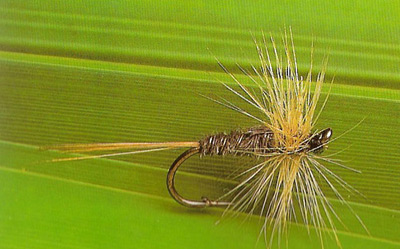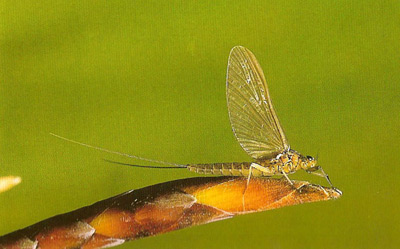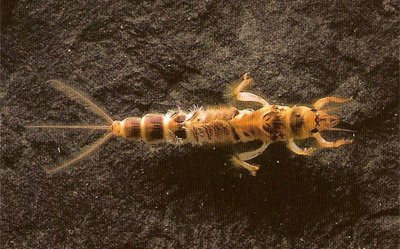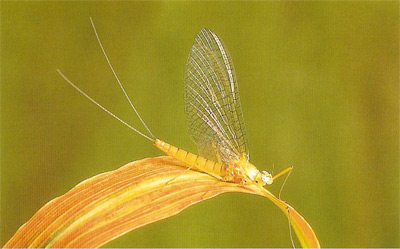| Disclosure: Just to be open and honest the buttons and links you click on in the website will in most cases take you to another website where you can purchase the products I am reviewing. As an Amazon Associate I earn from qualifying purchases. |
Matching the Hatch Techniques – How to save a blank
What is matching the hatch? If you are new to fly fishing you may be unaware of the insects that fish eat along the rivers and lakes. Each season of the year produces new species of insect that the trout have become used to and will feed upon when they are in season.
As new insects become available the older insects will die away. Trout that are a few years old will be savvy to the food available and so it becomes increasing difficult to entice them to take an artificial fly.
This is where matching the hatch techniques come into play as the angler needs to learn to get as close as he can to the natural insect life when presenting his fly.
So how do we go about matching the hatch?
First thing we do when approaching a fishing venue is to take a few minutes to scan the surroundings to see if there is anything naturally hatching. You need to check the grass beside the river the trees and if nothing is showing then check the insect life at the edge of the river or lake.
Be careful not to disturb the water too much as you will spook any close trout away and it may take some time for them to return and spoil your chances of success. When checking for the insects it is good to have a fine mesh net with you so you can catch some and get a closer look as flying insects can be very hard to imitate.
When you have had a look at the insect check in your box of flies and try to get one that matches the insect as closely as possible. Trout of many seasons will be very cagey and unless you have a fly that is close to the hatching insect you will have very little chance of catching them as they will be gorging themselves on the hatch and will ignore everything else.
Another thing to consider is the movement of the natural insect, you will want to mimic that as closely as possible also. That does not mean you try to match them flying but rather their movement in or on the water. Some insects will get stuck and don’t really move so this becomes a waiting game by just casting out and letting the breeze take the fly around the swim.
This is were a strike indicator will come in handy. It is a small floating bead or tied on yarn that you can watch and any movement that looks like a take will let you know a trout has been at your fly. This is the time to strike and hopefully begin a fight. As you will learn a trout can suck in a fly and spit it out before you can feel it so the sight indicator is a welcome addition to the tackle box.
Another point on movement is the position of the fly in the water column is it on the top middle or bottom or is it travelling up or down the column. These are all things to consider and try to match to get the best results out of matching the hatch.
The popular trout fly patterns
When you go trout fishing it is advisable to carry with you a good selection of flies. These you can purchase or tie yourself but try and cover the basic colours and sizes as best your budget will allow. It can be very frustrating when travelling to a venue to fish to find the trout are feeding on natural insects of a certain colour and you don’t have anything close to them in your boxes. I have seen some anglers carry many boxes with them to try and cater for this but if you are careful you can imitate a lot of insects with a few good patterns.
Each angler will have his or her own opinion on what is a must carry fly but a good starting point would be;
Damsel Nymph (sizes 10-12 long shank
Silver Sedges (sizes 12-16)
Olive Suspender Buzzer (sizes 14-18)
Coch-y-bonddu (sizes 14-18)
Tups Indispensable (sizes 14-16)
Greenwell’s Glory (sizes 12-16)
Gold Ribbed Hare’s Ear (sizes 14-16)
Here are a few examples to show you what I mean when matching the hatch.






If you want to do a bit more studying or reading on the subject of entomology the you will find this book very interesting. Matching the Hatch
That is my beginners class on matching the hatch techniques and as with most things in fly fishing you can get more advanced I will leave that for another post.
Check out this great info graphic from Fishtec on the subject.
UK Upwing Flies – find the right pattern, created by Fishtec
UK Sedge Flies – find the right pattern, created by Fishtec
UK Terrestrials and other insects – find the right pattern, created by Fishtec
Feel free to leave comments or contact me for more information.
Tight Lines!




I match the hatch with an olive wooly bugger
Yea the Wooly Bugger can prove productive especially for those larger cruising fish. Thanks for stopping by.
As a young fisherman, we used to fish the little creek that ran along behind our property. The cool thing was that a fish hatchery was upsteam about a mile and there were always plenty of fish to catch. Trout was a daily treat at our house. The best way to catch them? Yup, use the same type food they were used to in the hatchery. Love fishing!
That’s matching the hatch as its simplest form. Try that with a seasoned trout of a few seasons and you will come up blank then your skills of matching will be really tested.
The mayfly/junebug hatch on Lake Erie can be a slow time for fishing. I’ve never tried to match their eating habit at that time with a fly. It just might work. I’m going to ask in the forums if anyone is doing this
It can be productive to try and match the hatch for trout don’t see why it wouldn’t work for walleye too.
Those flies are truly a work of art. Great article, very informative!
There are some guys that have a true gift and can tie works of art if you ask me.
I had no idea fish were so smart. Those lures are works of art.
Lisa believe me seasoned trout are very crafty, I have watched them swim up and down a slick full of insects sipping down the naturals and completely ignoring mine. How frustrating! Thats when Un Matching the Hatch Techniques comes in handy.
This is pretty interesting information Mark. Being a newbie I didn’t know some of these complexities. No wonder it is so much easier to land the little trout! I checked out the match the hatch books and there are so many I can’t decide. Is there a particular one you would recommend for a beginner?
Jim I have the “Matching The Hatch” by Pat O’Reilly published by Swan Hill Press it comes in kindle format as well a really good read. MATCHING THE HATCH:
Looks like a good book Mark with lots of great reviews. Reading some of the reviews gives me the impression that it is written specific to the UK. What are your thoughts on how helpful it would be here in Nova Scotia in Canada?
Its my feeling that insects don’t change that much from Canada to the UK as we are close to the same latitude. Even if not the details of how to search the waterways for insect life and how to copy them are the same the world over, even if the actual insect life may differ.